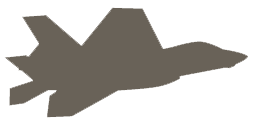NAS Patuxent River, Md. –
By Richard R. Burgess, Osprey Publishing Ltd., UK. 2022. 96 pp. Ill.
No. 141 in Osprey’s Combat Aircraft series, this latest book from retired U.S. Navy Lt. Cmdr. Richard Burgess is his usual highly detailed and colorful account of one of the two U.S. Navy and Marine Corps’ jet fighters in the Korean War of 1950-53. With its partner Grumman F9F Panther, the Banshee served on Navy aircraft carriers and also flew with a single Marine Corps photo squadron ashore. While the Banshee is also the subject aircraft in James Michener’s highly acclaimed novella “The Bridges at Toko-ri.” The also well-received movie version of the book, starring William Holden and Grace Kelly and a stellar supporting cast and special effects that earned it an Oscar, used Panthers because Banshees were not easily available when the movie was being shot. However, the Panther fit in well and the full-color movie told the action-filled story with all of the action and drama of the book.
The F2H-1 entered service in 1949 but was rapidly replaced by the F2H-2, which began flying many attack missions from Navy carriers during the Korean War, while its F2H-2P version was the Marine Corps’ main shore-based variant for VMJ-1, their photo-reconnaissance squadron.
Following the war, the Banshee served in the U.S. Navy and Marine Corps reserves as well as aboard Royal Canadian Navy’s (RCN) carrier, HMCS Bonaventure (CVL 22), originally under construction in 1943 for the Royal Navy as HMS Powerful. However, construction was halted until the Canadians got the hull in April 1952 and finished construction adding an angled deck and steam catapults before commissioning her in January 1957. U.S. Navy F2H-3s were eventually brought aboard starting in 1955 as the only jet aircraft to fly from the RCN carrier.
Giving full details of the Banshee’s squadrons in peace and war, this book also includes many black-and-white and color photos of American F2Hs as well as those in Canadian service after the war. The usual folio of color profiles by Osprey full-time artist Jim Laurier and the always exciting specifically commissioned color cover by Scottish artist Gareth Hector add their special quality to this new effort by Burgess.
